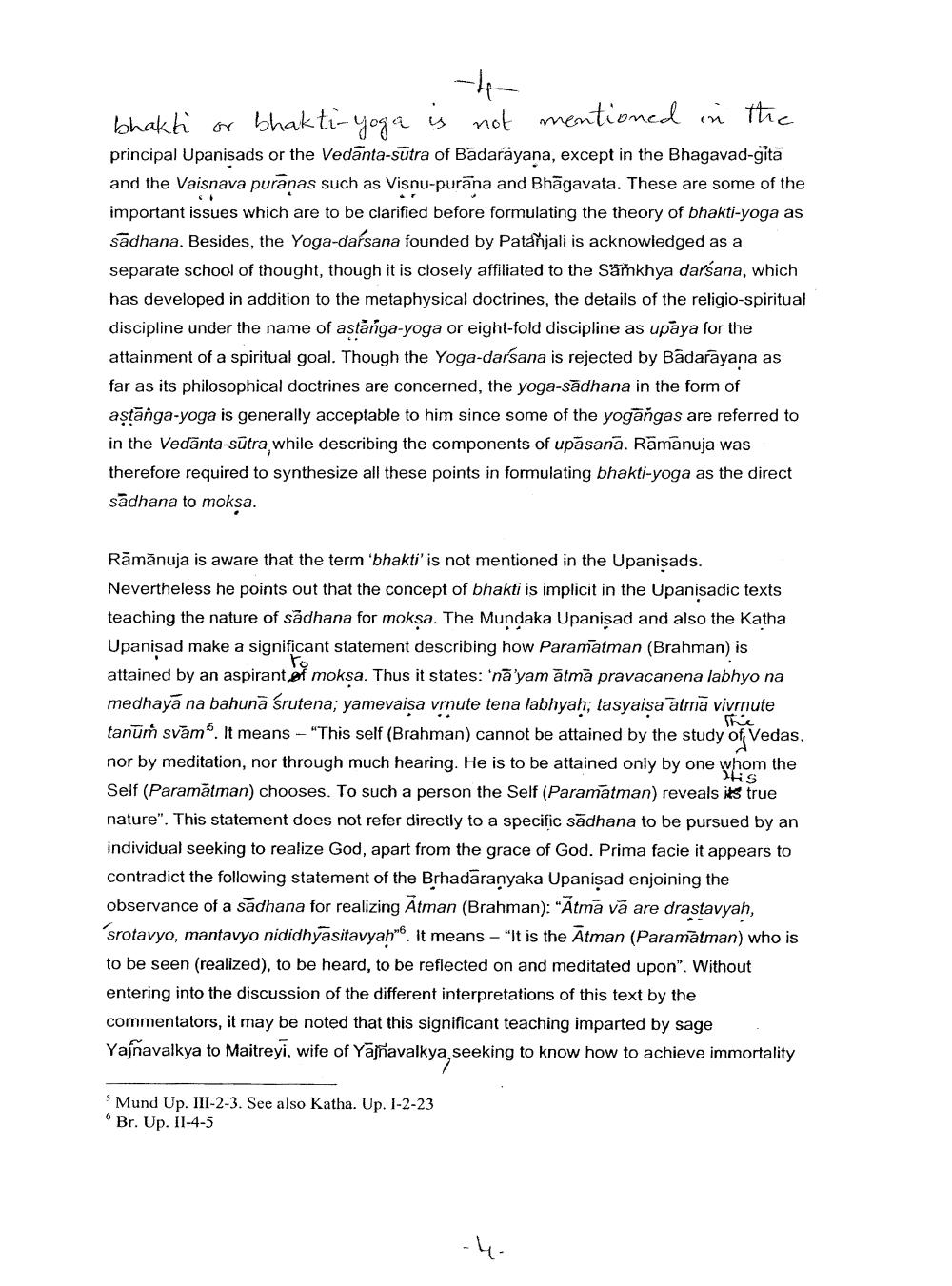Book Title: Synthesis of Yoga in Vaisnavism of Ramanuja Author(s): Publisher: View full book textPage 4
________________ bhakti or bhakti-yoga is not mentioned in the principal Upanisads or the Vedanta-sutra of Badarayana, except in the Bhagavad-gita and the Vaisnava puranas such as Visnu-purana and Bhagavata. These are some of the important issues which are to be clarified before formulating the theory of bhakti-yoga as sadhana. Besides, the Yoga-darsana founded by Patanjali is acknowledged as a separate school of thought, though it is closely affiliated to the Sankhya darsana, which has developed in addition to the metaphysical doctrines, the details of the religio-spiritual discipline under the name of astanga-yoga or eight-fold discipline as upaya for the attainment of a spiritual goal. Though the Yoga-darsana is rejected by Badarayana as far as its philosophical doctrines are concerned, the yoga-sadhana in the form of astanga-yoga is generally acceptable to him since some of the yogangas are referred to in the Vedanta-sutra, while describing the components of upasana. Ramanuja was therefore required to synthesize all these points in formulating bhakti-yoga as the direct sadhana to moksa. HS Ramanuja is aware that the term 'bhakti' is not mentioned in the Upanisads. Nevertheless he points out that the concept of bhakti is implicit in the Upanisadic texts teaching the nature of sadhana for moksa. The Mundaka Upanisad and also the Katha Upanisad make a significant statement describing how Paramatman (Brahman) is attained by an aspirant of moksa. Thus it states: 'na'yam atma pravacanena labhyo na medhaya na bahuna srutena; yamevaisa vrnute tena labhyah; tasyaisa atma vivrnute tanum svam. It means - "This self (Brahman) cannot be attained by the study of Vedas, nor by meditation, nor through much hearing. He is to be attained only by one whom the Self (Paramatman) chooses. To such a person the Self (Paramatman) reveals its true nature". This statement does not refer directly to a specific sadhana to be pursued by an individual seeking to realize God, apart from the grace of God. Prima facie it appears to contradict the following statement of the Brhadaranyaka Upanisad enjoining the observance of a sadhana for realizing Atman (Brahman): "Atma va are drastavyah, srotavyo, mantavyo nididhyasitavyah"6. It means - "It is the Atman (Paramatman) who is to be seen (realized), to be heard, to be reflected on and meditated upon". Without entering into the discussion of the different interpretations of this text by the commentators, it may be noted that this significant teaching imparted by sage Yajnavalkya to Maitreyi, wife of Yanavalkya, seeking to know how to achieve immortality s Mund Up. III-2-3. See also Katha. Up. I-2-23 Br. Up. Il-4-5Page Navigation
1 2 3 4 5 6 7 8 9 10 11 12 13 14 15 16 17 18 19 20 21 22 23
